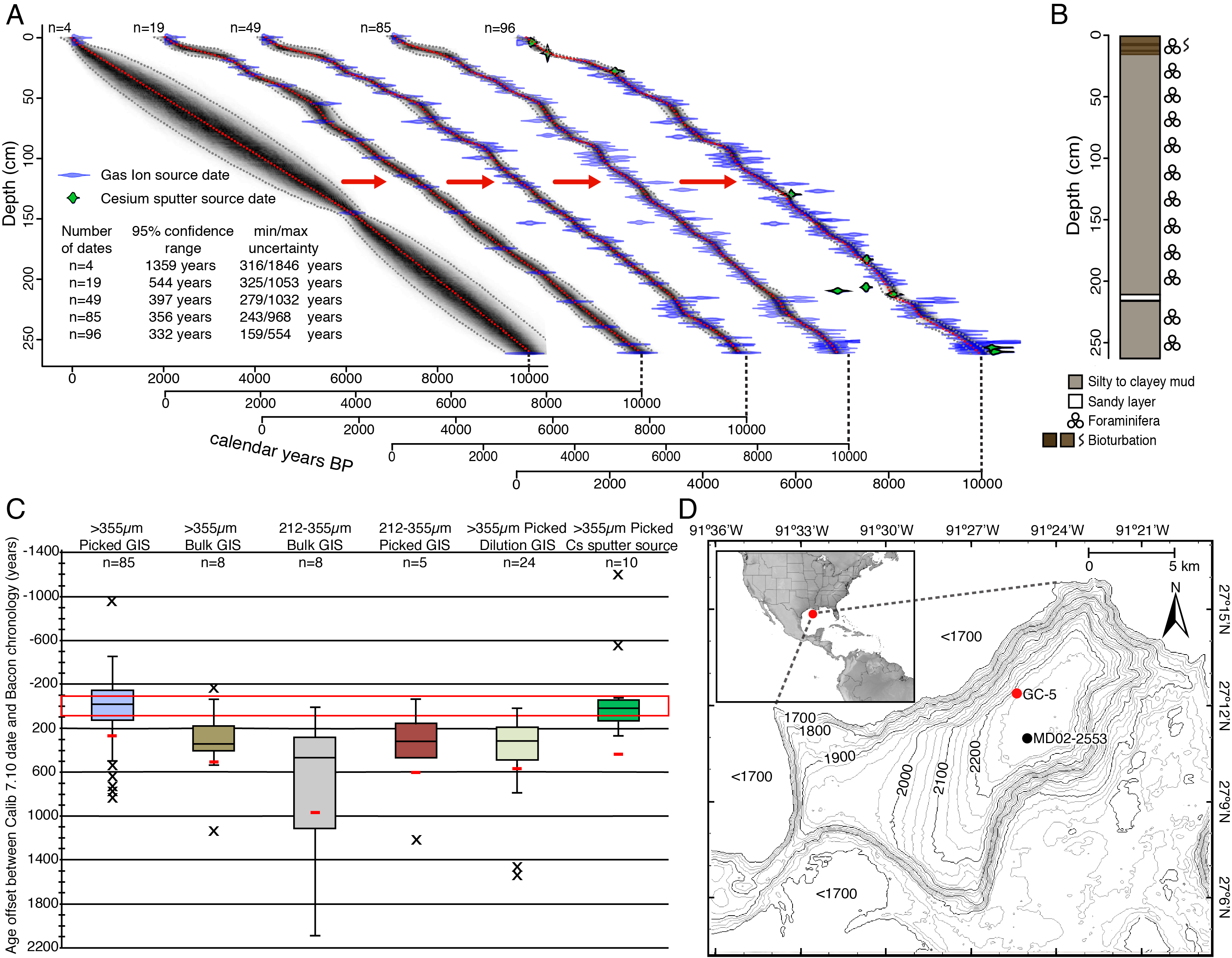What is new in the lab!?
MAY 2016
Devon Firesinger travels to Woods Hole to test his hypothesis ‘Quantity Trumps Quality’
The application of the Bayesian statistical accumulation model and Gas-Ion Source in tandem guided real-time 14C measurements by identifying each subsequent interval to quantify. Non-sequential dating iteratively improved uncertainty but with diminishing return on age constraint, providing the operator with knowledge on when to conclude analysis. This method can be used in combination with conventional graphitization 14C dates, as provision of denser dating around a precise baseline chronology. Additionally conventional AMS dates with higher precision can be used to improve a Bayesian model that shows a higher frequency of reversals, hiatuses, etc. than occurred in this core. This approach required less interpolation between discrete data points and resulted in better chronostratigraphic characterization of the archive when compared to a previously established chronology.
 Devon’s manuscript figure: A) Evolution of Bacon-informed GIS chronology showing increasing precision of accumulation model, CFAMS-GIS 14C dates (blue), Cesium sputter source 14C dates (green), grey dotted lines represent 95% confidence ranges and red dotted lines denotes the best model based on the weighted mean. The final chronology comprised of 85 GIS dates and 10 cesium sputter source dates, 332 year 95% confidence range. B) PE13-33-7 GC-5 core lithology diagram, indicating a hiatus ~213-215cm. C) Comparison of chronometers at equivalent core depths, median age offsets of calibrated (Calib 7.10) dates compared to the weighted mean of the Bacon chronology. Red rectangle illustrates average instrument uncertainty ± 89 years, root mean square error marked by red points, and outliers by black x points. D) Map of Pigmy Basin with coarse scale bathymetry (Ryan et al., 2009, http://www.geomapapp.org).
Devon’s manuscript figure: A) Evolution of Bacon-informed GIS chronology showing increasing precision of accumulation model, CFAMS-GIS 14C dates (blue), Cesium sputter source 14C dates (green), grey dotted lines represent 95% confidence ranges and red dotted lines denotes the best model based on the weighted mean. The final chronology comprised of 85 GIS dates and 10 cesium sputter source dates, 332 year 95% confidence range. B) PE13-33-7 GC-5 core lithology diagram, indicating a hiatus ~213-215cm. C) Comparison of chronometers at equivalent core depths, median age offsets of calibrated (Calib 7.10) dates compared to the weighted mean of the Bacon chronology. Red rectangle illustrates average instrument uncertainty ± 89 years, root mean square error marked by red points, and outliers by black x points. D) Map of Pigmy Basin with coarse scale bathymetry (Ryan et al., 2009, http://www.geomapapp.org).



